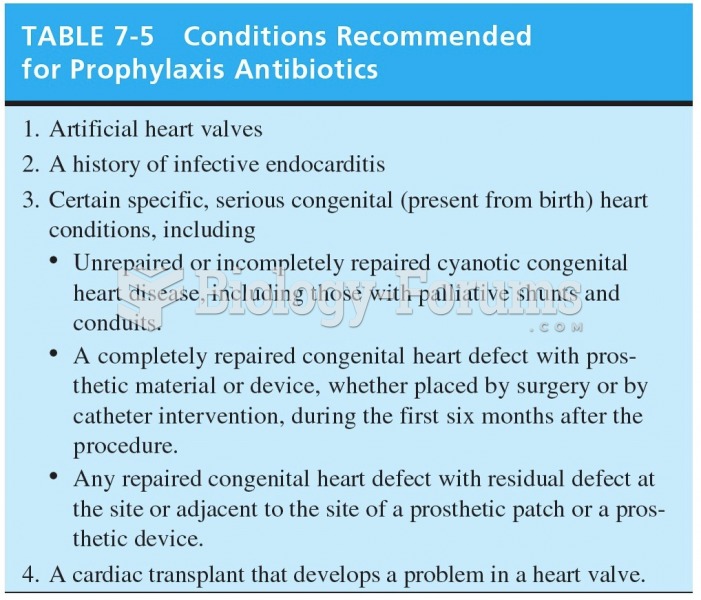|
|
|
A serious new warning has been established for pregnant women against taking ACE inhibitors during pregnancy. In the study, the risk of major birth defects in children whose mothers took ACE inhibitors during the first trimester was nearly three times higher than in children whose mothers didn't take ACE inhibitors. Physicians can prescribe alternative medications for pregnant women who have symptoms of high blood pressure.
The heart is located in the center of the chest, with part of it tipped slightly so that it taps against the left side of the chest.
Asthma cases in Americans are about 75% higher today than they were in 1980.
Pubic lice (crabs) are usually spread through sexual contact. You cannot catch them by using a public toilet.
The first oncogene was discovered in 1970 and was termed SRC (pronounced "SARK").







